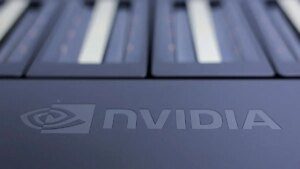AI is making significant strides in enterprise operations, heralding changes comparable to those brought about by the steam engine during the Industrial Revolution of the 19th century. According to the AI Adoption Index 2.0 Report by NASSCOM, India’s adoption of Artificial Intelligence (AI) has seen a slight increase, with the index rising from 2.45 in 2022 to 2.47 in 2024. The report predicts that the Indian AI market will experience a compound annual growth rate (CAGR) of 25–35 percent through 2027, primarily driven by AI software, services, and Generative AI.
In light of growing demands for real-time insights, automation, and scalable AI workloads, enterprises are increasingly investing in high-performance computing systems, private AI clouds, and specialized GPU-based servers. This article examines how businesses can effectively establish and expand AI infrastructure, providing guidance for CIOs, CTOs, and IT leaders navigating this transition.
Five Key Shifts in Enterprise Infrastructure
The integration of Generative AI, large language models (LLMs), and real-time analytics is leading to five crucial transformations in enterprise infrastructure strategy:
-
Real-Time Architectures and AI-Ready Data Stacks: Companies are adopting real-time streaming architectures to facilitate live inference. Vector databases are being combined with relational systems to enable embeddings and semantic search, while data lakehouses are emerging as a preferred model that merges the flexibility of data lakes with the performance necessary for AI workloads.
-
DevOps Transforming into MLOps and AIOps: Infrastructure teams are required to manage hybrid environments that encompass both traditional applications and AI workflows. This shift accelerates the transformation from DevOps to MLOps/AIOps, with increasing reliance on tools that enable model versioning, A/B testing, performance monitoring, and automated retraining.
-
AI-Specific Security and Governance: With the rapid adoption of LLMs, enterprises are pivoting their compliance and security priorities. They are investing in governance platforms to oversee model performance, identify drift, and adhere to evolving regulations. The focus is increasing on implementing guardrails to mitigate risks associated with model leakage and reputational damage.
-
Cost Pressures and Infrastructure Rebalancing: Rising demand for GPU and high-performance computing (HPC) infrastructures is escalating cloud expenses. To manage costs, organizations are exploring options like Retrieval-Augmented Generation (RAG), re-evaluating LLM deployment on EC2, and formulating more economical hybrid infrastructure strategies.
-
User-Layer Democratization and Prompt Engineering Maturity: Generative AI is bringing infrastructure closer to business users, akin to how enterprise resource planning (ERP) systems have integrated IT into core functions. The rise of low-code tools, such as Replit and Lovable, allows for the creation of real-time dashboards and applications. Concurrently, prompts are becoming more domain-specific, increasing the risk of over-optimization and diminished output, hence the necessity for evaluation layers in infrastructure design.
Sectors Leading AI Infrastructure Modernization
AI is transitioning from experimental projects to enterprise-scale deployment, prompting organizations to re-engineer their core infrastructure for production-grade intelligence. Various sectors are at the forefront of this drive for infrastructure modernization:
-
Technology and Software Companies: Product-focused companies are systematically integrating AI capabilities into their offerings, necessitating scalable and flexible inference infrastructures. Major software as a service (SaaS) providers are developing AI-native functionalities, such as intelligent document processing, predictive workflows, and automated customer support. Leading cloud hyperscalers are hastening efforts to develop AI-optimized infrastructure services in response to soaring enterprise demand.
-
Financial Services: One of the most established use cases for AI is real-time fraud detection. Algorithmic trading firms are building specialized GPU-accelerated clusters to enhance predictive market models, while wealth management firms are operationalizing conversational AI for client advisory and portfolio management.
Hybrid Cloud Models Empowering Enterprises
Enterprises recognize the advantages of hybrid orchestration through intelligent workload management across both private and public infrastructures. Modern hybrid platforms can automatically direct training jobs to cost-efficient public cloud resources while retaining inference workloads on dedicated, low-latency private infrastructure. This dynamic workload placement enhances cost-efficiency and performance without requiring manual oversight.
Successful implementations typically combine private infrastructure for core, stable AI workloads with hybrid integration to benefit from specialized cloud services. Organizations usually observe the most significant advantages when maintaining 60–70% of their AI computations on private infrastructure, utilizing cloud resources for scalable bursts and AI capabilities that they prefer not to manage in-house.
Choosing the Right Infrastructure Investments
Selecting the appropriate hardware involves aligning infrastructure choices with specific AI workload profiles through a structured decision-making framework. It’s advisable to start with workload profiling using the client’s own datasets and models. This entails benchmarking critical training and inference processes across CPU, GPU, and specialized accelerator environments, evaluating total cost of ownership over a 2 to 3-year period, and considering operational factors such as deployment complexity, energy efficiency, integration overhead, and maintainability.
This method ensures that infrastructure investments are tailored to actual workload behavior rather than relying on generic benchmarks, leading to optimal long-term performance and cost predictability.
Evaluating ROI and Business Value of AI Infrastructure
Assessing the ROI and business value of AI infrastructure investments requires a structured evaluation across three levels: immediate operational metrics, intermediate business impact measures, and long-term strategic value indicators. This multi-tier approach recognizes that the benefits of AI infrastructure materialize over varying timeframes and with different levels of measurability.
-
Tier 1: Operational metrics focus on immediate efficiency improvements, such as reduced manual provisioning time, cost savings in infrastructure, or quicker model deployment cycles.
-
Tier 2: Business impact measures reflect how AI infrastructure contributes to enhanced outcomes, like improved client response times or increased accuracy in fraud detection.
-
Tier 3: Strategic value indicators evaluate long-term benefits, such as accelerated AI adoption within business units or increased innovation velocity.
This structured assessment helps ensure that AI infrastructure investments are appraised based on their broader impact on enterprise transformation rather than solely on immediate cost savings.
Impact of Modern AI Infrastructure
Modern AI infrastructure facilitates automated resource allocation, optimizes workloads, and minimizes manual management requirements. It promotes predictive maintenance strategies, reducing downtime and allowing engineering teams to concentrate on innovation. Moreover, it accelerates time-to-insight, shortening decision cycles and creating competitive advantages at scale.
The outcome is a more responsive, resilient, and scalable business landscape, enabling enterprises to handle spikes in training or inference operations seamlessly. This alignment ensures that AI adoption progresses in tandem with business needs without creating fragility or unnecessary complexity.
In today’s AI-first era, infrastructure has evolved from a mere backbone of enterprise operations to a strategic asset. Organizations that choose to modernize their infrastructure today will not only keep pace with technological changes but also drive them.
The author of this article, Kumar Vikas, serves as the Executive Vice President for Data & AI at Bounteous.
Disclaimer: The views expressed herein are solely those of the author, and ETCIO does not necessarily endorse them. ETCIO assumes no responsibility for any damage caused to individuals or organizations directly or indirectly.
Published On Oct 29, 2025 at 06:00 AM IST.










